Making the perfect espresso isn’t just about the type of coffee beans you use or your fancy espresso machine. One of the key factors that often gets overlooked is the measurement of coffee. Understanding “how many grams of coffee for espresso” can make a huge difference in the quality and taste of your brew. In this article, we’ll dive into the importance of coffee measurement and how it affects your espresso experience.

Understanding Espresso Coffee Measurements
Getting the right measurement for your espresso is crucial. The standard amount of coffee used plays a big role in determining the taste, strength, and quality of your espresso. So, what’s the magic number?
For a single shot of espresso, the standard measurement is typically around 7-9 grams of ground coffee. For a double shot, you’re looking at about 14-18 grams. These measurements ensure that the coffee is neither too weak nor too strong, giving you that perfect balance of flavors.
Why Measure Your Coffee?
Precision in coffee measurement isn’t just for the coffee snobs—it’s grounded in science and can significantly enhance your espresso experience. When you measure your coffee accurately, you control the extraction process, ensuring consistency and quality in every shot. Here are some key reasons why precise coffee measurement is crucial:
- Consistency: By using the same amount of coffee each time, you ensure that each shot of espresso tastes just as good as the last.
- Optimal Extraction: The coffee-to-water ratio directly impacts how well the water extracts flavors from the coffee grounds. Too much coffee can lead to over-extraction, resulting in a bitter taste. Too little coffee can cause under-extraction, leading to a sour or weak flavor.
- Balance of Flavors: Proper measurement helps balance the sweetness, acidity, and bitterness in your espresso.
- Efficiency: Measuring your coffee accurately minimizes waste.
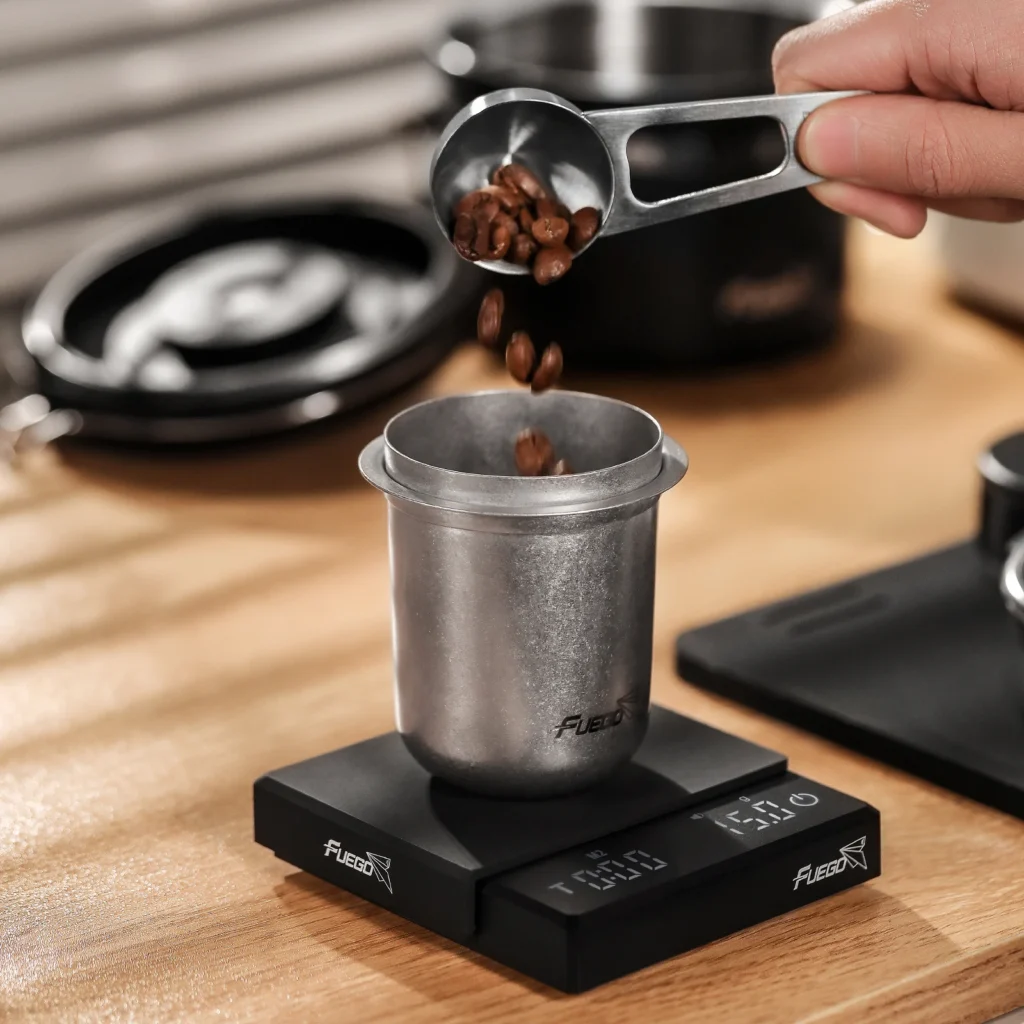
Ideal Coffee Measurements for Espresso
When it comes to making the perfect espresso, the ideal coffee measurement can vary depending on the type of espresso machine you use and the coffee beans you prefer. Here’s a detailed guide to help you determine “how many g of coffee for espresso” for the best results.

Single Shot of Espresso
For a single shot of espresso, the standard amount is typically between 7-9 grams of ground coffee. This range can vary slightly based on personal preference and the type of coffee beans used. Lighter roasts might require a bit more coffee to achieve the desired strength, while darker roasts may need slightly less.
Double Shot of Espresso
A double shot of espresso usually requires between 14-18 grams of ground coffee. Again, the exact amount can depend on the specific beans and roast level. Some espresso machines also have different baskets or portafilters designed to hold varying amounts of coffee, so it’s essential to match the coffee quantity to your equipment.
Factors Influencing Coffee Measurement
Several factors can influence how much coffee you should use for your espresso. Understanding these elements can help you fine-tune your brew for the best possible results. Here’s a look at how grind size, water quality, and tamp pressure affect the amount of coffee used.
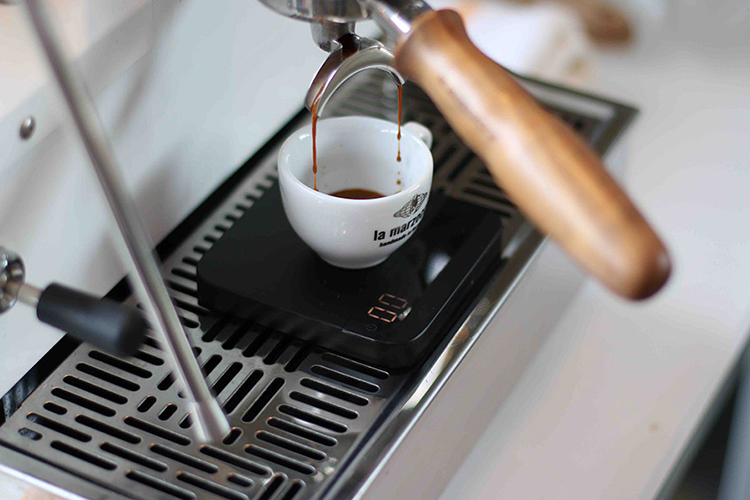
Grind Size
The grind size of your coffee beans plays a crucial role in the extraction process. Here’s how it impacts your coffee measurement:
- Finer Grinds: If your coffee is ground too fine, it can result in over-extraction, where the water takes too long to pass through the coffee, extracting too many bitter compounds. This might mean you need to use less coffee to achieve the right balance.
- Coarser Grinds: Coarser grinds allow water to flow through more quickly, which can lead to under-extraction, producing a weak and sour espresso. In this case, you might need to use more coffee to ensure a strong enough brew.

Water Quality
The quality of water you use also affects the flavor and extraction of your espresso. Here’s why it matters:
- Hard Water: Water with high mineral content can lead to over-extraction, as the minerals can interact with the coffee grounds more aggressively. You might need to adjust your coffee measurement slightly to compensate.
- Soft Water: Soft water, with fewer minerals, can under-extract the coffee, requiring you to use a bit more coffee to achieve the desired strength and flavor.
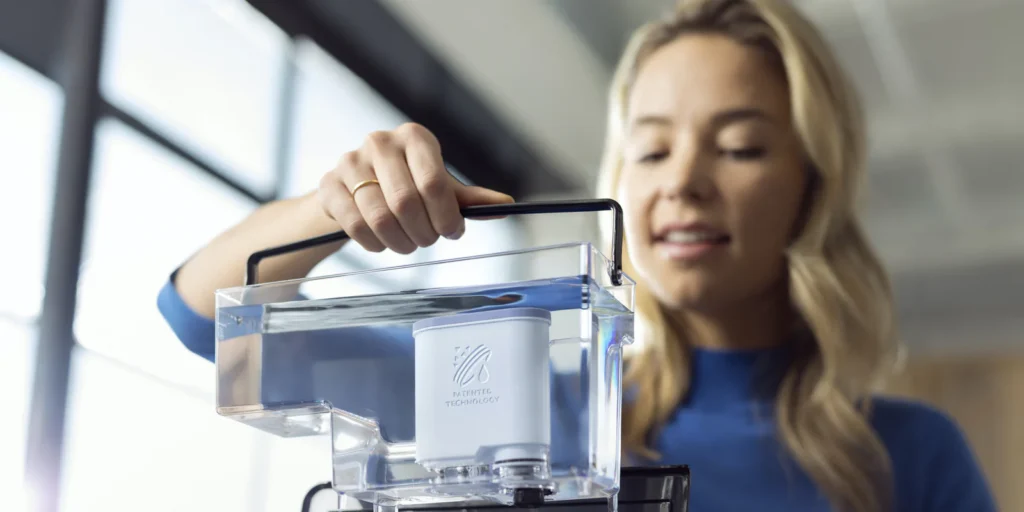
Tamp Pressure
Tamping refers to the pressure applied to the coffee grounds in the portafilter before brewing. Here’s how tamp pressure influences coffee measurement:
- Firm Tamp:
- A firmer tamp creates more resistance, slowing down the water flow and potentially over-extracting the coffee. You might need to use less coffee with a firmer tamp.
- Light Tamp:
- A lighter tamp allows water to flow through more quickly, which can under-extract the coffee. In this scenario, you might need to use more coffee to compensate for the faster extraction.
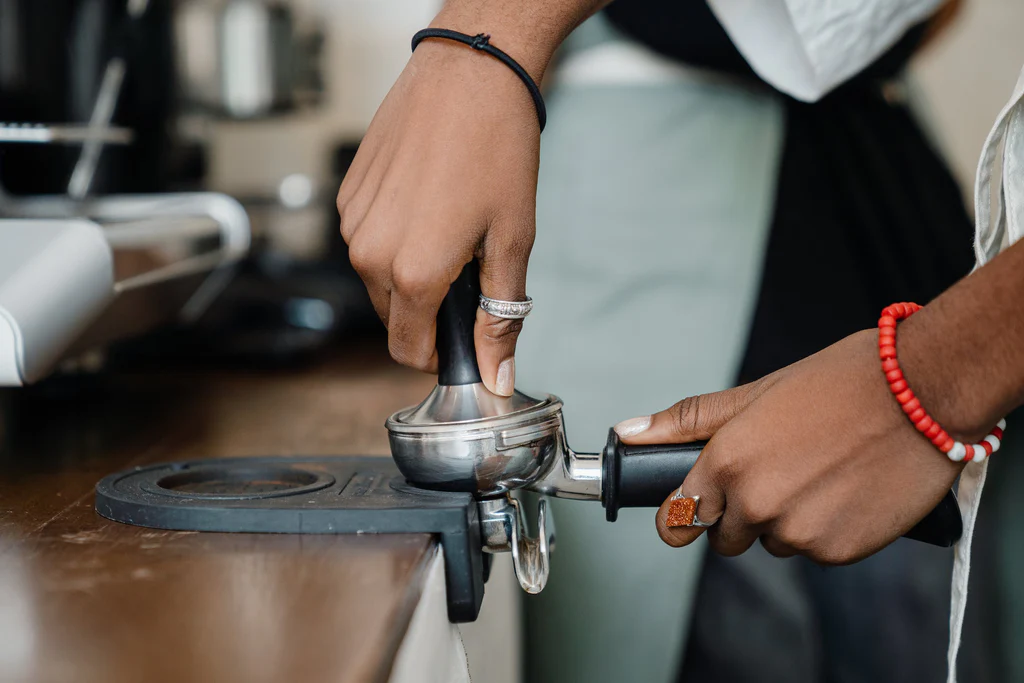
Experimenting with Coffee Ratios
While there are standard guidelines for how many grams of coffee for espresso, finding your perfect shot often involves a bit of experimentation. Everyone’s taste preferences are unique, and slight adjustments can make a significant difference in your espresso experience.
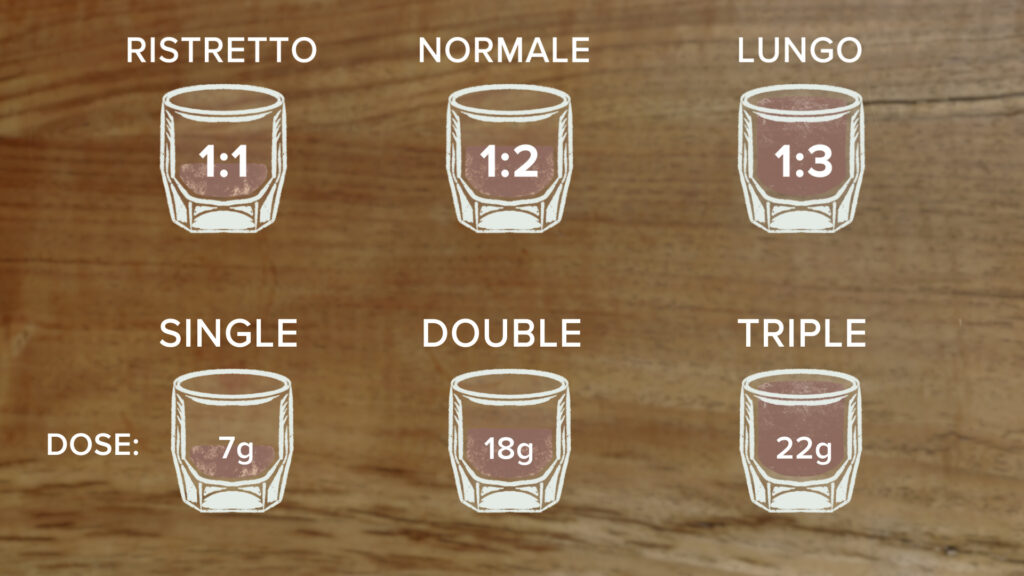
Start with Standard Ratios
Begin by using the standard measurements:
- Single Shot: 7-9 grams of ground coffee
- Double Shot: 14-18 grams of ground coffee
These ratios provide a solid foundation and can help you understand how changes affect the taste and strength of your espresso.

Adjust Gradually
Make small adjustments to the amount of coffee you use. Increase or decrease by a gram or two and note the differences in flavor and strength. Keep track of these changes to understand how they impact your espresso.
Experiment with Grind Size
When choosing the right coffee for your espresso, it’s essential to consider the roast and grind size. Combine adjustments in coffee measurement with changes in grind size. A finer grind might require a slight decrease in coffee amount, while a coarser grind might need a bit more coffee. Play around with these variables to find the sweet spot that suits your taste.
Take Note of Other Variables
Remember that factors like water temperature, quality, and tamp pressure also play a role. When experimenting, try to keep these variables constant to isolate the impact of coffee measurement changes.
Personal Preference
Ultimately, the perfect espresso is a matter of personal preference. Some people prefer a stronger, more intense shot, while others might enjoy a milder, smoother flavor. Don’t be afraid to stray from the standard guidelines if it means creating a cup that you love. For those interested in unique recipes, you might also want to try the perfect Cuban espresso recipe.
How to Measure Coffee for Espresso?
Accurate measurement is key to brewing a perfect espresso. Here’s a step-by-step guide on how to measure your coffee using both scales and measuring spoons.
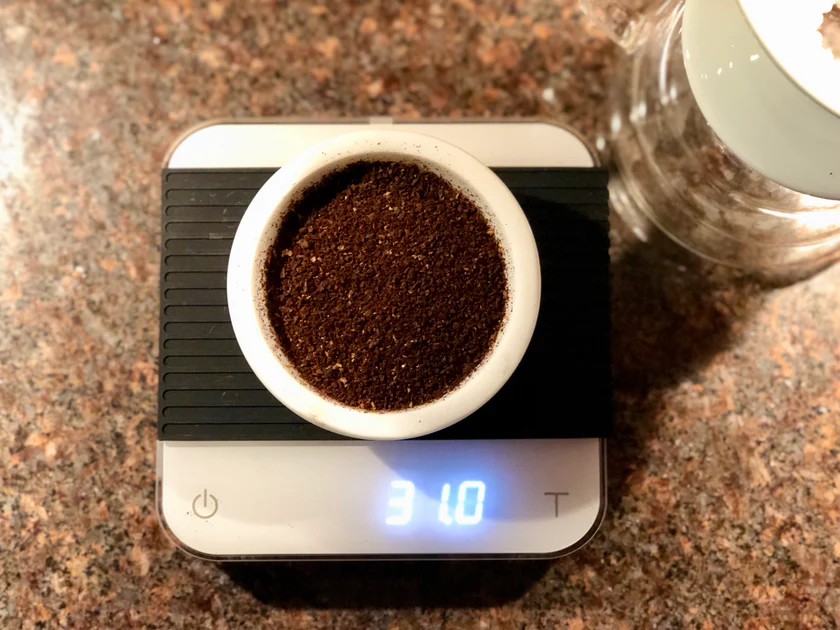
Tools for Accurate Measurement
To achieve a perfect shot of espresso, accurate measurement of coffee grounds is essential. Here’s an overview of the tools that can help you ensure consistency and precision in your espresso brewing process.
Digital Scales
- Precision and Accuracy: Digital scales are the gold standard for measuring coffee. They provide precise measurements, often down to 0.1 grams, ensuring you get the exact amount of coffee you need.
- Ease of Use: Most digital scales are easy to use. Simply place your portafilter or container on the scale, tare it to zero, and add your coffee grounds until you reach the desired weight.
- Consistency: Using a digital scale allows you to replicate your favorite espresso recipes with precision, ensuring each shot tastes just as good as the last.

Coffee Scoops
- Convenience: Coffee scoops are handy and quick to use, making them a convenient tool for measuring coffee. They typically measure 5-10 grams of coffee per scoop.
- Adjustability: While less precise than digital scales, scoops can be adjusted by leveling off or slightly heaping the grounds to get close to your desired measurement.
- Portability: Coffee scoops are portable and don’t require batteries, making them useful for situations where a scale might not be available.
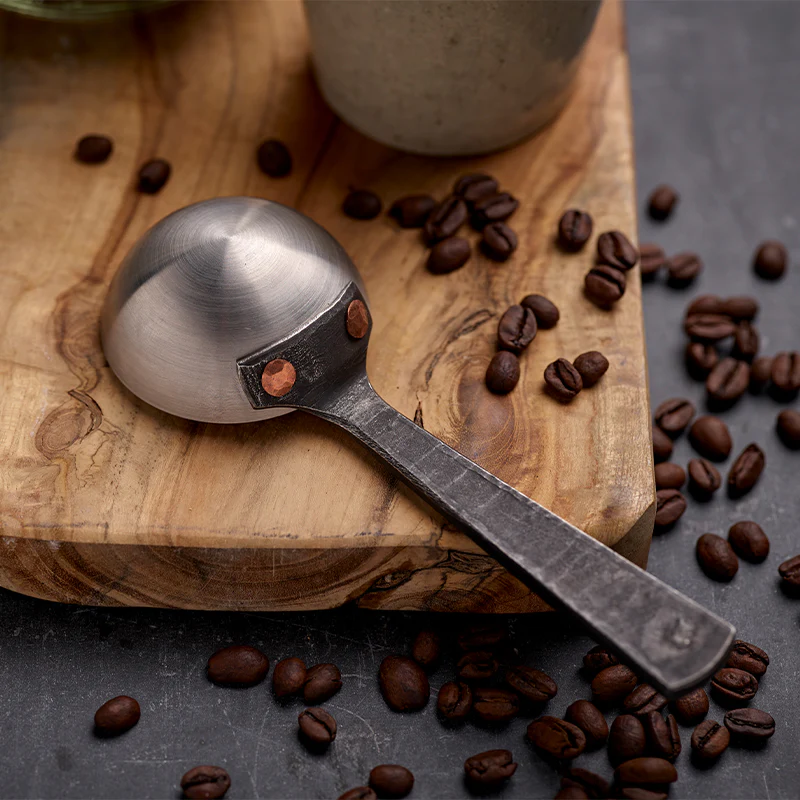
Measuring Spoons
- Versatility: Measuring spoons, commonly found in most kitchens, can be used to measure coffee grounds in a pinch. One tablespoon roughly equals 5 grams of coffee.
- Approximations: While not as accurate as scales, measuring spoons can provide approximate measurements that can be fine-tuned based on taste and experience.

Coffee Dosing Tools
- Specialized Equipment: Some espresso enthusiasts use coffee dosing tools designed to measure and distribute coffee grounds evenly. These tools can help achieve consistent dosing and tamping pressure.
- Enhanced Precision: Dosing tools often have adjustable settings to control the exact amount of coffee dispensed, enhancing the precision of your measurements.
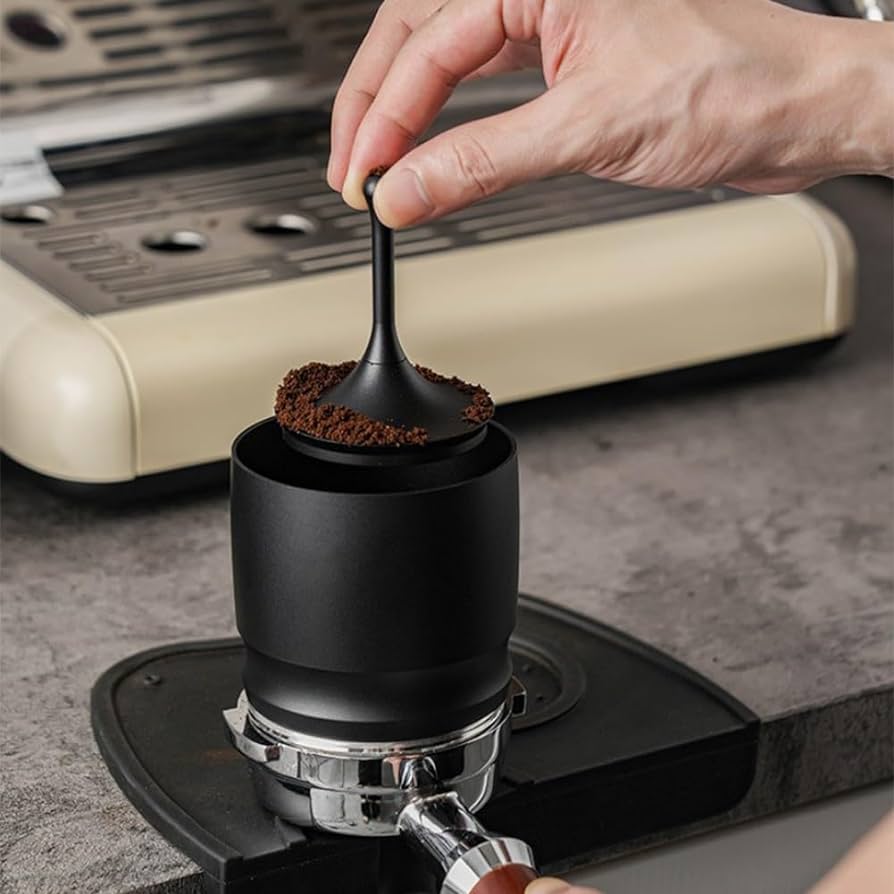
Common Mistakes to Avoid
Even seasoned baristas can make mistakes when measuring coffee for espresso. Here are some common errors and tips on how to avoid them to ensure your espresso turns out perfect every time.
- Using Inaccurate Tools
- Mistake: Relying on approximate measurements, such as using regular kitchen spoons or guessing the amount, can lead to inconsistent results.
- Solution: Invest in a digital scale for precise measurements. This ensures you’re using the exact amount of coffee needed for consistent flavor and strength.
- Inconsistent Coffee Grind
- Mistake: Using uneven or incorrect grind sizes can affect the extraction process, leading to bitter or weak espresso.
- Solution: Use a high-quality burr grinder to achieve a consistent grind size. Adjust the grind size based on the type of coffee and your espresso machine’s specifications.
- Incorrect Tamping Pressure
- Mistake: Applying too much or too little pressure when tamping the coffee grounds can result in uneven extraction.
- Solution: Aim for a consistent tamping pressure of about 30 pounds. Practice to ensure uniform pressure each time you tamp.
- Ignoring the Coffee-to-Water Ratio
- Mistake: Failing to maintain a consistent coffee-to-water ratio can lead to under-extraction or over-extraction.
- Solution: Stick to the standard measurements (7-9 grams for a single shot, 14-18 grams for a double shot) and adjust slightly based on taste and machine performance.
- Not Adjusting for Bean Type and Roast Level
- Mistake: Using the same measurement for all types of coffee beans and roast levels can result in suboptimal espresso.
- Solution: Experiment with different amounts of coffee for various beans and roast levels. Darker roasts may require slightly less coffee, while lighter roasts might need a bit more.
- Skipping Equipment Calibration
- Mistake: Failing to regularly calibrate your grinder and espresso machine can lead to inconsistent results.
- Solution: Regularly calibrate your equipment according to the manufacturer’s instructions to ensure consistent performance and measurement accuracy.
- Using Stale Coffee Beans
- Mistake: Using coffee beans that are past their prime can affect the flavor and quality of your espresso.
- Solution: Use freshly roasted coffee beans and store them properly in an airtight container away from light and moisture. Aim to use beans within two weeks of roasting for the best results.
FAQs About Espresso Preparation
While you can use measuring spoons, they are less precise than digital scales. One tablespoon is approximately 5 grams, but using a scale is recommended for accuracy.
Regular calibration, according to the manufacturer’s instructions, is essential for consistent performance and measurement accuracy.
Yes, different beans and roast levels can require adjustments in the amount of coffee used. Darker roasts might need less coffee, while lighter roasts could need more.
Disclosure: Our blog contains affiliate links to products. We may receive a commission for purchases made through these links. However, this does not impact our reviews and comparisons. We try our best to keep things fair and balanced, in order to help you make the best choice for you.

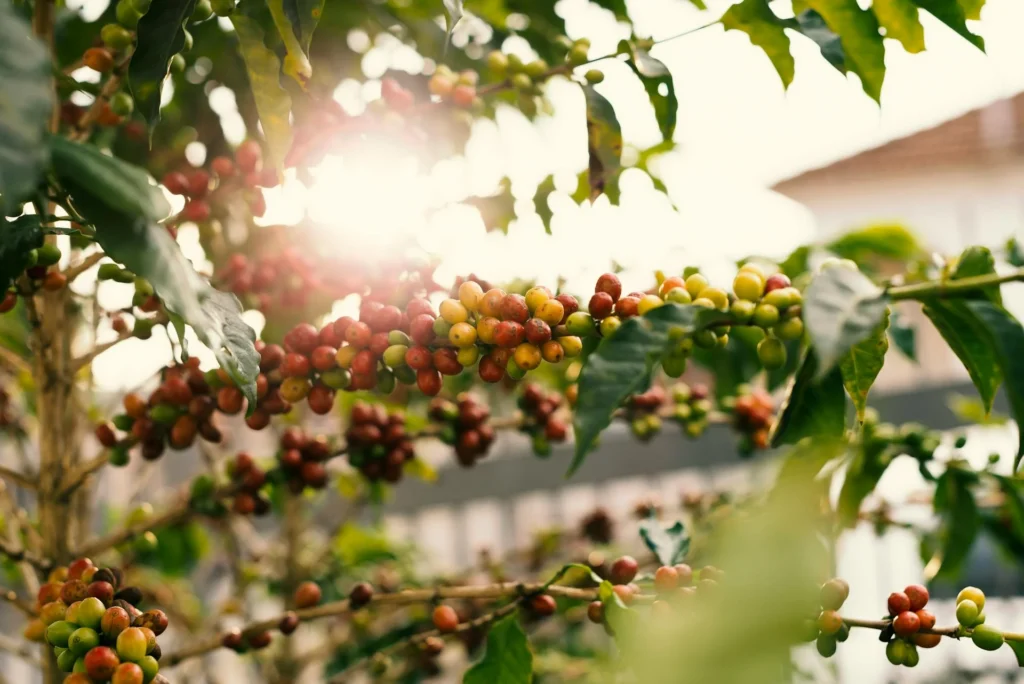
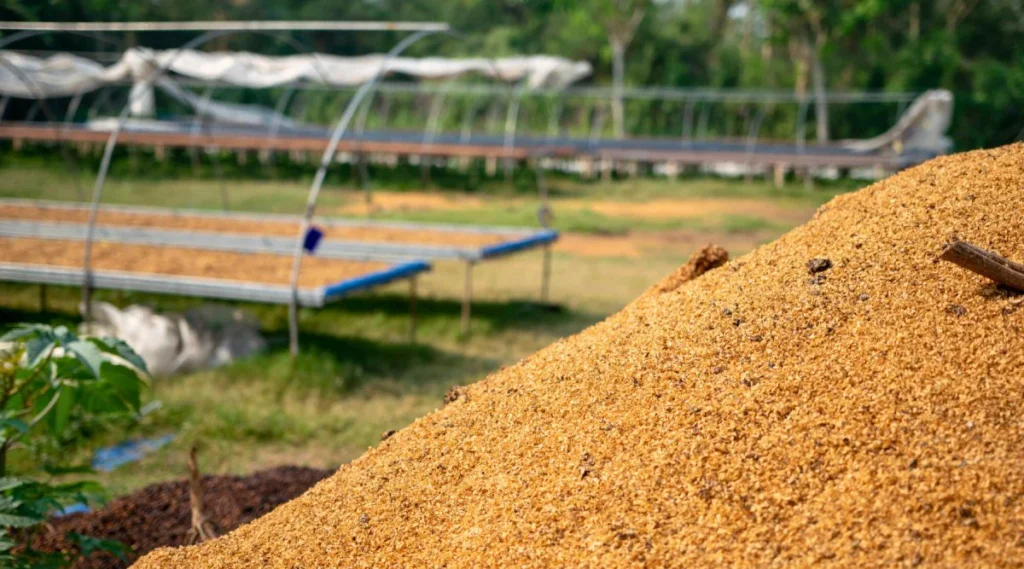
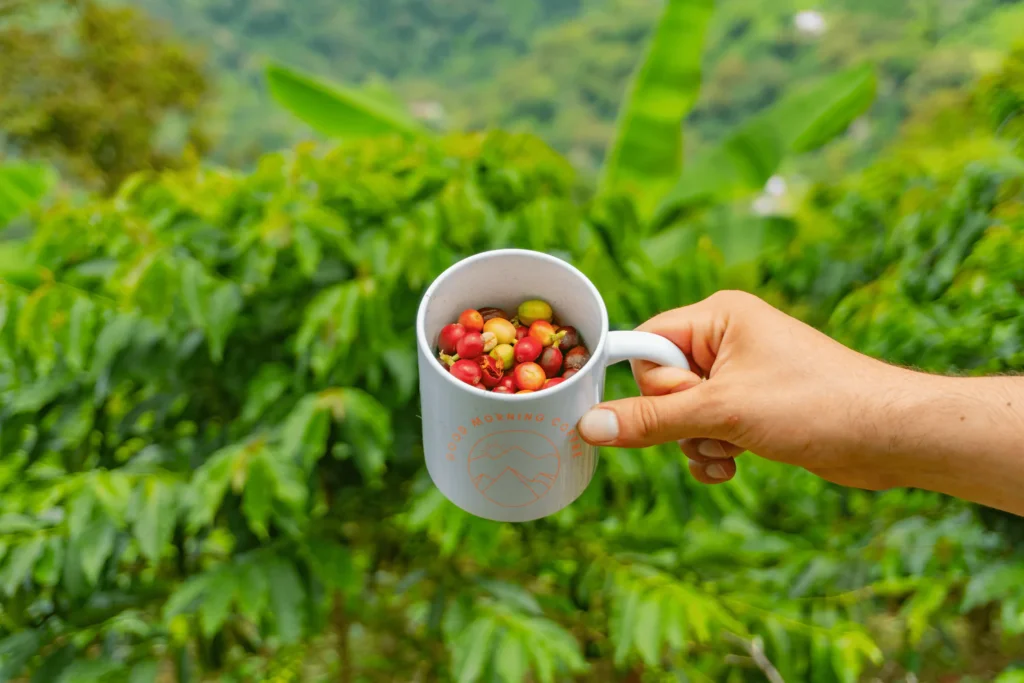

One Response